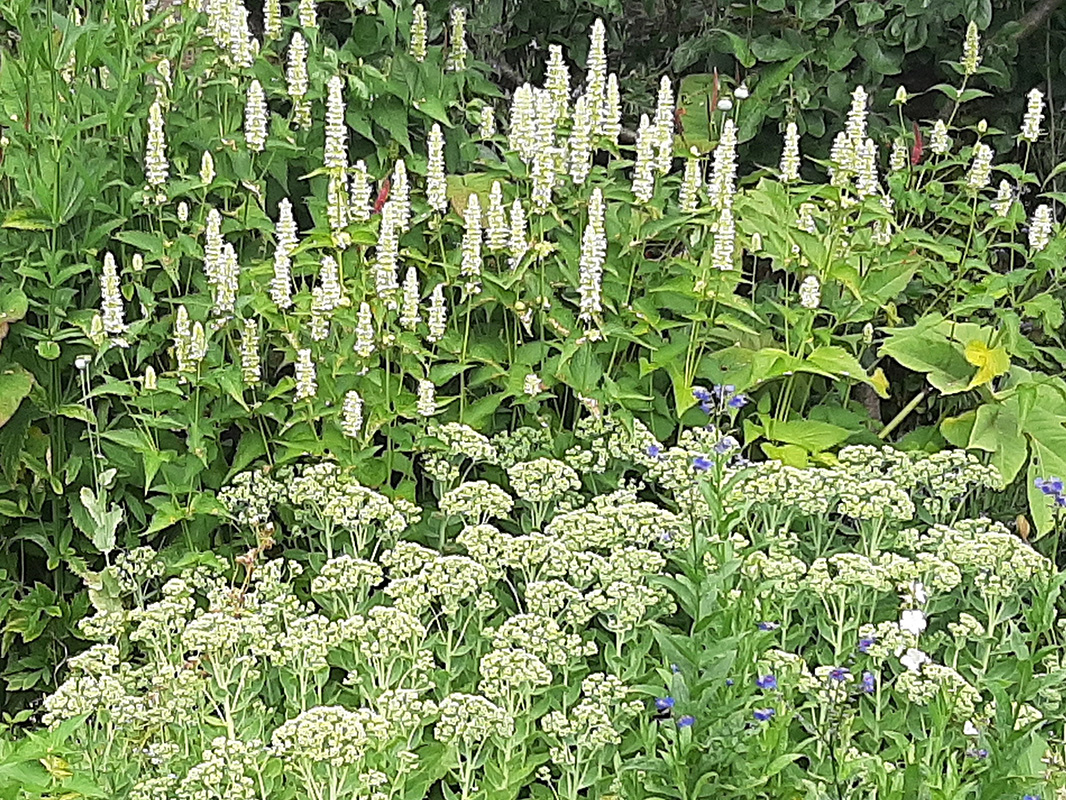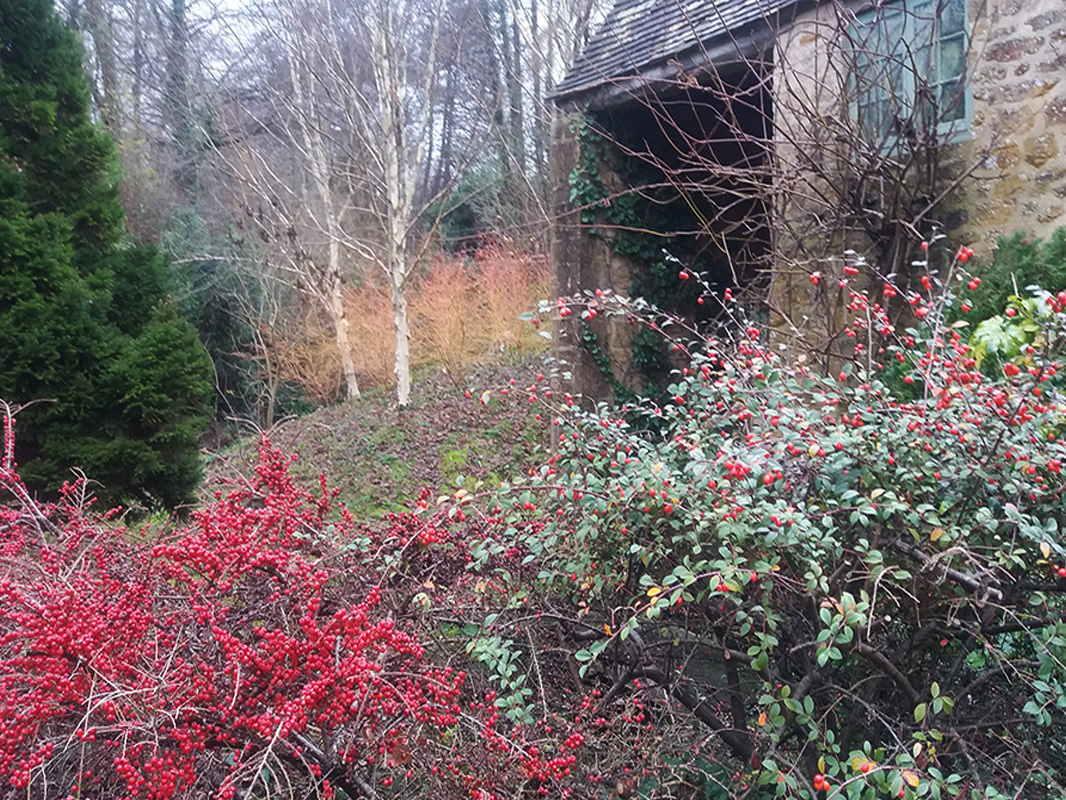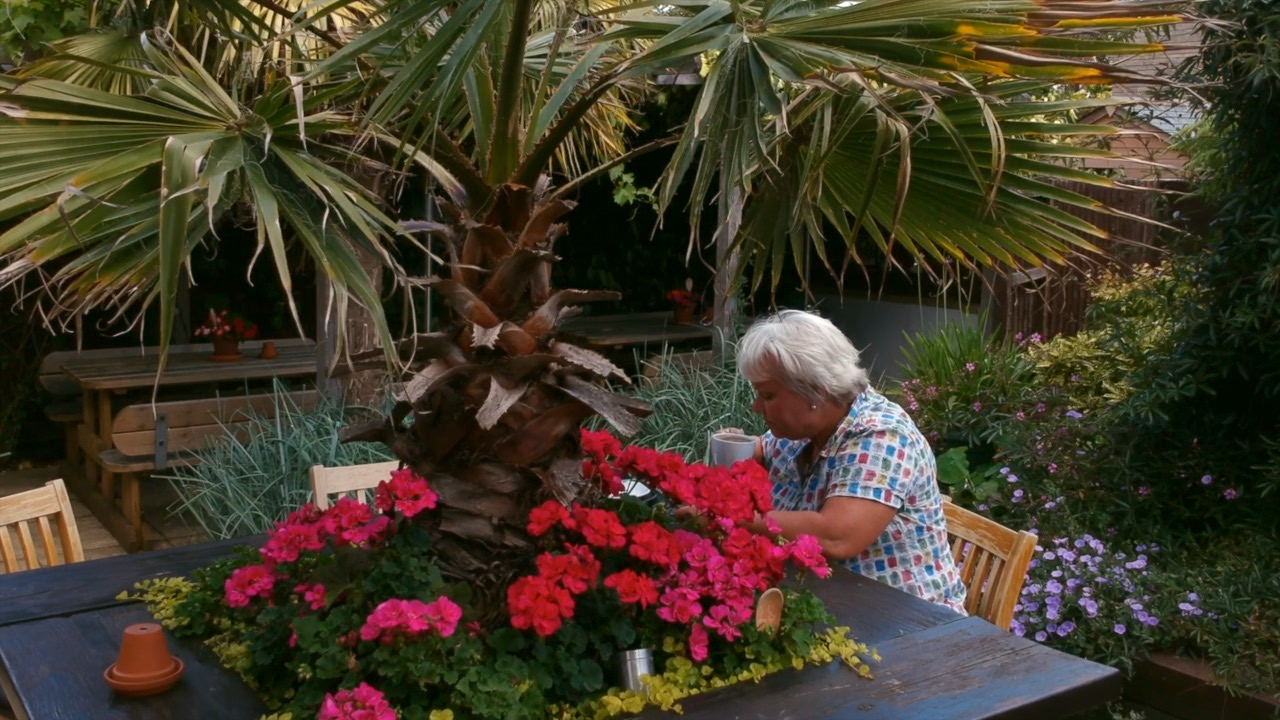My top 10 perennials
At the time of writing this the rain is battering the borders flat and I have no desire to nip out and see how the garden is doing – whatever it is, it can do it on its own. As I said last month, this is a great time of year to plan the garden and consider what perennials to plant next year, before the rigours of Christmas take over.
This list is compiled from over 30 years of Somerset gardening. Perennials have a permanent root system but a non-woody top growth, some evergreen and some dying back to the ground every winter. Although groups expand, the growth does not continue ever upwards year after year like shrubs, so cutting back is much less of a bother, and you don’t need a ladder or a chainsaw. A majority are grown for their flowering display between April and October, but I pay keen attention to their other qualities.
To make it into the charts, the flowering season must be a decent length or so spectacular that the memory remains long after the flowers have gone over. The dead flowers should continue to contribute or go over tidily – while I might shave a plant to the floor in August, I don’t dead head. The plant should be good of increase but not invasive. It should stand up by itself without a cat’s cradle of stakes and twine, but I will allow the odd half hoop or hazel twig. The foliage should smother the ground sufficiently to reduce weed competition. They should be windproof and not tasty fodder for predators. Above all, I have not tired of them in a lifetime of gardening. 5 for shade, 5 for sun.
- Alchemilla mollis. I know this is much disliked for its self-seeding habit, but if you brutally shave it to the floor just before going on your August summer holiday, you will be rewarded by no seedlings and a new crop of leaves that will see you through autumn as fresh as any spring growth. I do not want a world where its lime froth and magical drops of water in the leaves does not uplift me in June. It will grow in both sun and shade.
- Pulmonaria officinalis. Lungwort or lords and ladies is a most useful ground cover for shade and sun, so long as it has some moisture. Flowering usefully early in April and May, its hairy spotty leaves are shunned by slugs and smother the competition very well, looking handsome until December. ‘Sissinghurst White’ and ‘Opal’ are favourite varieties of mine.
- Polystichum setiferum ‘Bevis’. Ferns are a complex subject, many with compound names to confuse, especially when several varieties of a species can look identical from a distance. Seek out this one from a specialist nursery. It has refinement in its fronds and a graceful arching habit that you can spot from a way off once your eye is attuned.
- Geranium ‘Wargrave’. Margery Fish of East Lambrook Manor said, ‘If in doubt, plant a geranium’, for there is one for every border situation, whether short or tall, sun or shade and in many shades of white, pink or blue. The 1980’s rush to possess every kind has lessened since we found out how willing they were, but this unassuming variety is excellent for planting en masse between newly planted shrubs, to be crowded out and then moved to grow in another new scheme – a sacrificial plant. The pink is slightly salmon, it flowers all summer and if leggy, you can shear it back and it will grow again. It will grow in hot sun or cool shade and nothing eats it.
- Halonechloa macra aurea. This Japanese grass shoots in April, expanding to form a gold mound which is an excellent foil to the plants above. Slowly increasing the clump size, it does not like the driest situation and will roll its leaves up in protest. Otherwise the only requirement is to shear it to the floor once your have tired of its winter buff dead leaves, and before the new ones grow. There are several forms with degrees of stripiness, but straight green H. macra is not to be despised. With these 5 perennials and some bulbs, my shade garden could be complete.
- Sedum Autumn Joy. A plant for the driest sunniest spot, but tolerant of some shade, this has now been renamed Herbstfreude, but it will always be S.A.J. to me. Needing only yearly cutting down and splitting or thinning every third February, the shoots are already contributing to the border from March, and the flat pale green August flower heads slowly transform through pink and crimson to rust then chocolate, stiffening the scene until their annual cut-back. It is a good front-of-border partner to Pennisetum villosum.
- Dianthus Devon Dove. The border pinks are a delight in June, their scent beyond compare. This white variety holds itself up better than darling scruffy old Mrs Sinkins, with her split petticoats all over the place. The steely blue foliage of pinks is evergreen and an asset to traditional cottage garden border fronts throughout the year, so I put up with the trouble of taking cuttings to prevent this short-lived beauty from fading away.
- Peony ‘Bowl of Beauty’ The minute I acquire a big enough border, the first inhabitants will be half a dozen of these peonies. I will be a slave to their needs, protecting their shoots from incautious hoeing, propping up their top-heavy flowers, all for 10 days of gazing deep into their souls every June.
- Agapanthus ‘Blue Moon’ There was a time when I sought the bluest of Delft blue Aggie’s Pants, such as Navy Blue, overlooking the softer colours. I have come to appreciate the subtle lavender of this variety, which is one of the latest to flower well into September. It has no bad habits at all. It will tolerate life in a large pot for several years and is fully frost hardy.
- Diascia personata This plant has been a revelation in the last year. Removed from a client’s garden where it had grown too well and smothered its neighbours, it spent last winter shoved in a pot on my terrace, in turn being smothered by Beast One and Two, which it shrugged off. Still evergreen, it was rehomed in a sunny border which became hotter and drier than we predicted and flowered un-watered all June and July. It was sheared hard back in August when we had enough of its enthusiasm, fully a metre high and more across. It responded by growing back and flowering from September to November. I describe it as bubblegum pink and by a friend as ‘grandma’s knicker pink’. It is a good partner for dark penstemons like ‘Plum Jerkum’. These 5 plants form the backbone of my fantasy border.
With another ten perennials in mind, I could write this article all over again – I will next year.



